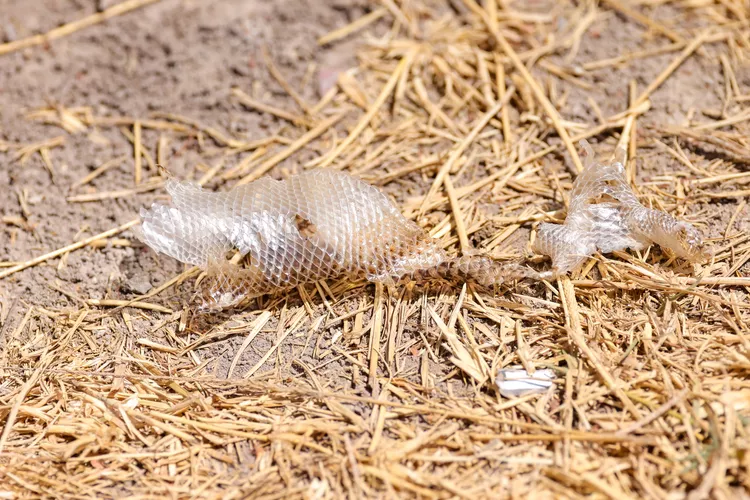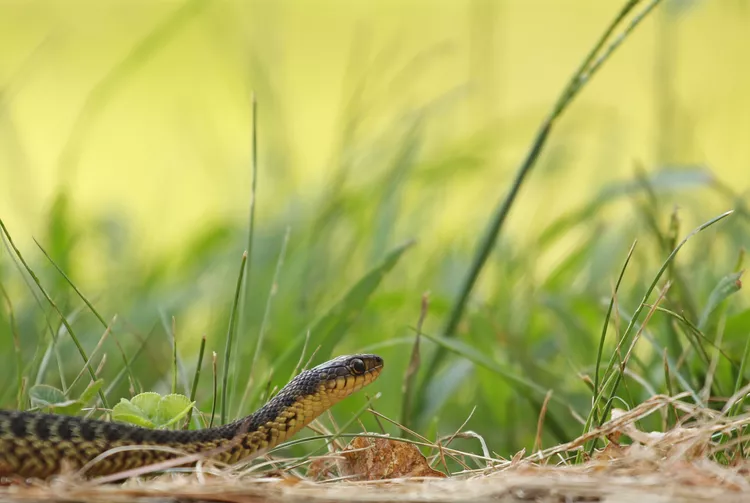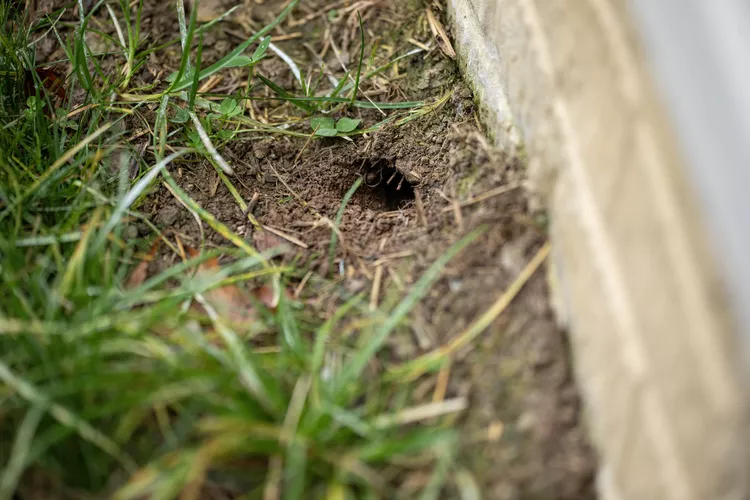Finding a snake hole—or what you think is one—in your yard can be troubling and your first reaction might be to get rid of it. But before you spring into action, it’s important to determine whether the hole you see is indeed a snake hole.
Here is all you need to know about identifying snake holes, the common types of snakes found in backyards, getting rid of snake holes, and keeping snakes out of your yard.
What Does a Snake Hole Look Like?
Snakes do not dig their own holes, but rather take over the holes and burrows that other animals have dug and abandoned. They take up residence in holes that vary from half an inch to about three inches in diameter and may be circular or oval, with clean or jagged edges.
Former chipmunk holes are clean holes the size of a silver dollar. Vole holes are dime-sized, often around the roots of plants.1 Turtle holes are distinct, dome-shaped with excavated soil in front of the hole; burrows gently slope down.
Look for two telltale signs of snakes near the hole: discarded snake skins and/or snake droppings (a thick dark brown or black liquid in a cylindrical form with a chalky white cap).
Snake Hole vs. Rodent Hole

To rule out that a hole is still inhabited by mice, rats, or other rodents and not a snake, look for signs of digging, such as tiny paw prints or claw marks, as well as small piles of freshly dug soil, which indicate that rodents are still inhabiting the hole.
Also, rodents use debris of all sorts to build their nests in a burrow. If you find shredded plastic, paper, cardboard, fabric, string, fiberglass insulation, and plant material such as straw nearby, it suggests it’s an active rodent hole.
Why Is There a Snake in My Yard?
Snakes are part of a healthy natural ecosystem, so their presence in your yard is not surprising. Here are some things that especially attract them:
- Food: Snakes feed on rodents, insects, and amphibians.
- Shelter and cover: Rocks, leaf piles, overgrown vegetation, and clutter offer snakes places to hide.
- Dampness: Standing water and damp areas provide snakes with moisture for survival as well as places to find moisture-loving worms and other prey.
Types of Snakes that Could Be in Your Yard
Here is a list of snakes commonly found in North America:
- Rat snakes (non-venomous): The genus of rat snakes includes some of the most common snake species found in suburban areas. The Eastern rat snake, also known as the black rat snake, can be intimidating due to its size (three to nine feet long). Another widespread rat snake is the corn snake, also called the red rat snake. It is bright red and orange and reaches two to six feet in length. It is found in the southeastern and central United States.
- Garter snakes (non-venomous): These small- to medium-sized snakes (18 to 30 inches long) are found throughout North America. Though they prefer areas near water, they survive in many different conditions.
- King snakes (non-venomous): Large (three to six feet long) but harmless, king snakes are found throughout the United States. Some subspecies are quite colorful, such as the scarlet king snake.
- Milk snakes (non-venomous): The size of milk snakes ranges between 14 and 72 inches in length, depending on the subspecies.
- Corn snakes (non-venomous): Corn snakes can be found in the southeastern United States, and they prefer to live in wooded, overgrown areas. Corn snakes are typically two to six feet long, and they’re bright red and orange.
- Cottonmouth snakes (venomous): Cottonmouth snakes get their name from their bright white mouth, which opens when threatened. They’re brownish-gray, two to four feet long, and live near water in the southeastern United States.
- Copperhead snakes (venomous): These dark brown snakes with hourglass-shaped markings reach two to three feet in length. They are found in the eastern United States.
- Rattlesnakes (venomous): These venomous snakes are mostly found in the American Southeast. They reach up to eight feet in length, and their thick, scaly bodies are typically brown with markings.
What to Do About Snake Holes

How to deal with a snake hole depends on the type of snake and your comfort level of having a snake in your yard. Here are your options.
- Do nothing. This is the best course of action for most snakes, as they rarely attack unless provoked and play an important role in backyard pest control by feeding on small rodents and garden pests.
- Fill the hole or block it. This is most likely a temporary remedy because if snakes like it in your yard, they will likely find another hole to live in. Fill the hole with soil, or block the entrance with a rock, a piece of burlap or chicken wire.
- Call a wildlife or pest control expert. This is usually only necessary if you have repeated issues with venomous snakes.
How to Prevent Snakes from Being On Your Property
It is unlikely that you’ll be able to make your yard snake-free—and because snakes are also beneficial and an important part of the food web and biodiversity, there is no need to unless they cause problems.2 But there are things you can do to make your backyard less inviting to snakes:
- Keeping your grass mowed.
- Ensure proper drainage and don’t overwater your lawn.
- Clear overgrown areas.
- Add plants that deter snakes, such as garlic.

